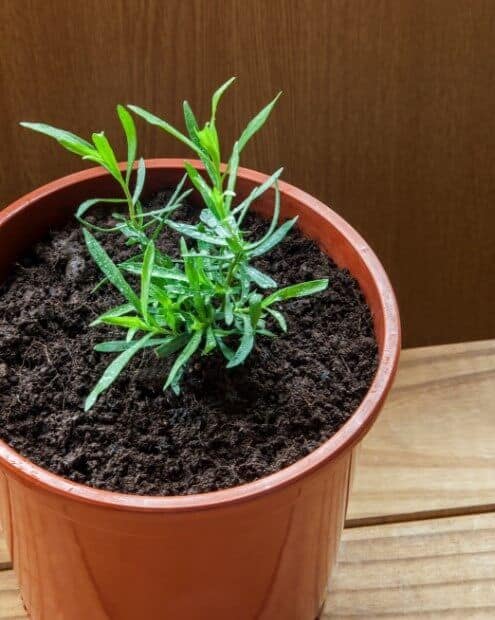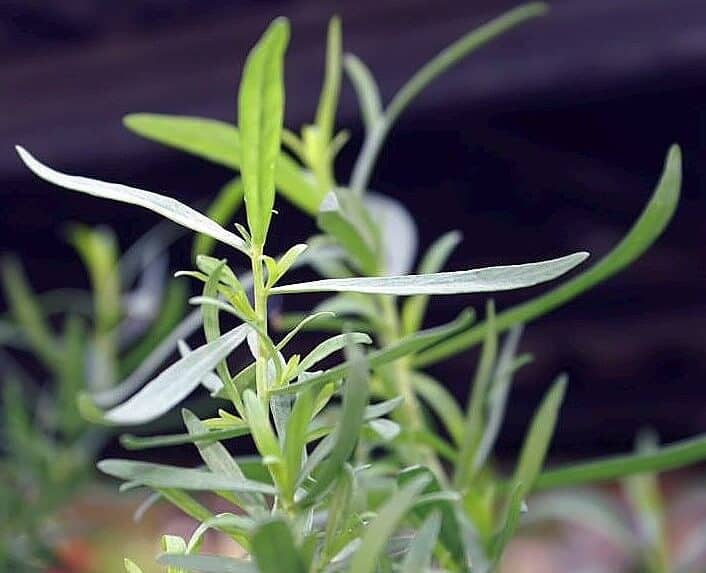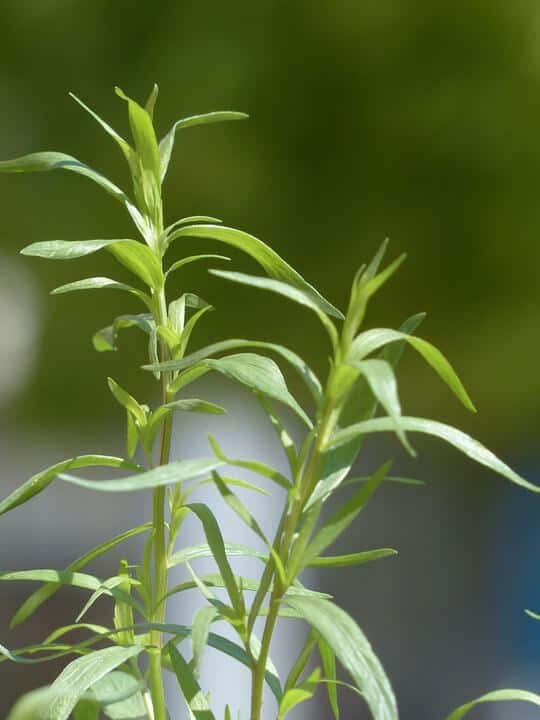How to Grow Tarragon At Home (A Beginner’s Guide)

Tarragon is a very particular herb that grows perennially. It matches fish, eggs, chicken, or green vegetables. Tarragon has a pungent flavor that tastes similar to fennel, which is famous for traditional ingredients.
People consume tarragon, either dried or fresh. Either way, it offers you health benefits such as reducing blood sugar, improving sleep quality, and reducing inflammation and pain.
Having tarragon grown in your house is one of the most leisurely green thumb activities. Now let’s dig into the soil, shall we?
Tarragon Varieties
But before we start planting tarragon, it’s good to know the varieties of it. There are three tarragon varieties you can choose based on your hardiness zone.
French Tarragon (Artemisia dracunculoides)
French tarragon is often called German tarragon. It has essential oil, which amazingly elevates the dish.
This type of tarragon is hardy to zone 5 to zone 4B with winter protection. Also, French tarragon loves full sun and tolerates partial shade.
You can only plant French tarragon from cuttings, and it needs well-drained soil.
Russian tarragon (Artemisia dracunculoides Pursch)
Compared to Frech tarragon, the Russian tarragon has a less intense flavor. Therefore people usually use it for health purposes or just as a visual in a garden.
Russian tarragon is hardy to zone 4, so it survives 30 degrees below zero F, the average winter temperature.
Mexican tarragon (Tagetes lucida)

As for Mexican tarragon, it withstands a hot and humid summer. However, it could withstand cold temperatures below 0 degrees or 32 degrees Fahrenheit.
Additionally, Mexican tarragon belongs to the marigold family. Also, people usually use Mexican tarragon to substitute French tarragon.
Tarragon Cultivation
Now you know the varieties of tarragon. I guess it’s time for you to learn about tarragon’s cultivation, starting from the soil until the divisions. There you go!
-
Soil Requirements
Growing herbs needs some soil conditions. As for tarragon, it grows best in aged compost soil with 6.3 to 7.5 pH. Make sure always to keep the soil well-drained and prevent it from overmoist or too acidic.
Tarragon could withstand drought better than overwatering. Once your soil overmoist or too acidic, your tarragon is not going to taste as delicious.
-
Sun Requirements
Tarragon loves full and direct sunlight. If you live in a scorching location, place your tarragon to get sunlight in the early morning only. This herb performs best in warm temperatures.
-
Hardiness
If you live in zone 4 or above in the state, tarragon will grow very well in your garden!
Tarragon is a perennial herb that survives in zone 4 and above. It is resistant to cold and heat, but it might die in freezing weather.
-
Water
What you should take note of is never overwater tarragon. First of all, keep the water moist until the plants are finally established. After that, water the plants occasionally with light watering every few days.
It is okay to left tarragon dry sometimes since it could withstand drought. However, over water and less water could affect the flavor and leaves’ quality.
-
Fertilizer
The lower the fertilizer, the better the flavor would be. That is what you should remember in cultivating tarragon.
It is okay if you want to fertilize your tarragon. But be mindful only to apply it in the initial planting stage.
-
Mulch
Mulch is sometimes necessary in some cases of the plants, including some herbs. It covers the soil made of sawdust or compost to reduce evaporation, maintain the temperature, control weeds, and enrich the soil.
Does tarragon need mulching? In a frigid temperature, yes, it does. Putting mulch around the tarragon in cold climates like winter helps the root when it dies back and goes into dormancy.
-
Pruning
Prune tarragon every week during the summer season. When the sun hits so hard in the late summer, tarragon will bolt. Once it booms the flower, the delicate tarragon leaves are going to taste bitter. Therefore weekly pruning is recommended.
How do you prune tarragon? Pinch off the top 2 inches of all new shoots to encourage a fuller plant with healthy root growth. Simple!
-
Division
When the spring comes, you’re going to have your tarragon spread continuously in your garden. It needs some space.
Try to give some air and breathing space for the tarragon by dividing the plants every three years. How to do that? Dig up large chunks of the plant (cutting the tangled roots apart) and transplant them elsewhere.
Best Methods to Grow Tarragon
-
Stem Cutting
The first best method to grow tarragon, and apparently what almost all people do, is stem cutting. It means you plant the previously existed plant that you cut beforehand.
Propagating tarragon by cutting can be done by cutting three to four inches of the stem and put it in a pot with a seedling oil mix. Make sure to have a well-drained hole in the bottom of the container.
-
Root Cutting
Root cutting is another method of propagating tarragon. How to do it?
First up, you need to dig up the roots, usually done when plants are dormant. Then, snip the seeds and cut them to be 3 to 6 inches in length.
After that, place the cutting in a container. Lay them horizontally and push a little until a half-inch deep.
Maintain its humidity by misting and check until the sprouts start growing. You can transplant them to the garden once the sprout has grown with some little root hairs.
-
Growing from Seed
You have to remember that the only tarragon that can be grown from seed is Russian tarragon. Other than Russian, you can only grow it from cuttings.
Growing Russian tarragon from seed is very simple!
Start seeding about four seeds in the pot and press the seed into the soil until the soil slightly covers them. Dampen the ground and wait until 10 to 12 days of low-rate germination.
How to Care for Tarragon
-
Pests/Disease
As for pests, tarragon has no significant issues with that. However, tarragon is quite sensitive to downy and powdery mildew when the soil is overly wet. In that case, root rot is also possible to occur in tarragon.
-
Propagating Tarragon
Tarragon can only be grown by propagation or by buying an established plant beforehand. You can cut a young stem for the best propagation result and cut it around five to six inches.
Remove the leaves from the bottom third. Then you can plant them in moist soil. You can use the root division method as well.
When to propagate tarragon?
Late spring or early summer is the best time to plan the cutting tarragon. Meanwhile, late winter is the best one for the root division.
-
Harvesting Tarragon
Notice that tarragon is a perennial herb. You can harvest tarragon until the end of the summer. Also, be mindful to stop picking tarragon leaves at very least a month before the first frost about to arrive.
When to start? You can start harvesting once the stems have reached six inches tall.
Pro-tip, keep the top of the plant trimmed back during the peak growing season. That way, you can keep the best flavor of tarragon as well as encourage more bushy growth.
-
Storing Tarragon
Finally, we’re storing our tarragon!
You can keep it fresh or dry it if you want. Fresh stems can be kept in a fridge, a glass of water, a damp paper towel, or any humid container.
You can freeze it for more prolonged use, though.
If you want to dry tarragon, tied them, and hang them upside down in a shady spot until they got scorched.
After they dried out, crumble the leaves into a paper container and transfer to another with a tight-fitting lid. Never use that after more than 30 days.

